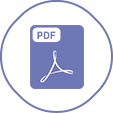The correct answer is A, "Type of floor material," as it is the least important operating suite design feature for the prevention of infection compared to the other options. According to the Certification Board of Infection Control and Epidemiology (CBIC) guidelines, the design of operating suites plays a critical role in infection prevention, particularly for surgical site infections (SSIs). While the type of floor material (e.g., vinyl, tile, or epoxy) can affect ease of cleaning and durability, its impact on infection prevention is secondary to other design elements that directly influence air quality, hygiene practices, and personnel movement (CBIC Practice Analysis, 2022, Domain III: Infection Prevention and Control, Competency 3.5 - Evaluate the environment for infection risks). Modern flooring materials are generally designed to be non-porous and easily disinfected, mitigating their role as a primary infection risk factor when proper cleaning protocols are followed.
Option B (positive pressure air handling) is highly important because it prevents the influx ofcontaminated air into the operating suite, reducing the risk of airborne pathogens, including those causing SSIs. This is a standard feature in operating rooms to maintain a sterile environment (AORN Guidelines for Perioperative Practice, 2023). Option C (placement of sinks for surgical scrubs) is critical for ensuring that surgical staff can perform effective hand and forearm antisepsis, a key step in preventing SSIs by reducing microbial load before surgery. Option D (control of traffic and traffic flow patterns) is essential to minimize the introduction of contaminants from outside the operating suite, as excessive or uncontrolled movement can increase the risk of airborne and contact transmission (CDC Guidelines for Environmental Infection Control in Healthcare Facilities, 2019).
The relative unimportance of floor material type stems from the fact that infection prevention relies more on consistent cleaning practices and the aforementioned design features, which directly address pathogen transmission routes. This aligns with CBIC’s focus on evaluating environmental risks based on their direct impact on infection control (CBIC Practice Analysis, 2022, Domain III: Infection Prevention and Control, Competency 3.4 - Implement environmental cleaning and disinfection protocols).
[References: CBIC Practice Analysis, 2022, Domain III: Infection Prevention and Control, Competencies 3.4 - Implement environmental cleaning and disinfection protocols, 3.5 - Evaluate the environment for infection risks. AORN Guidelines for Perioperative Practice, 2023. CDC Guidelines for Environmental Infection Control in Healthcare Facilities, 2019., , , ]








